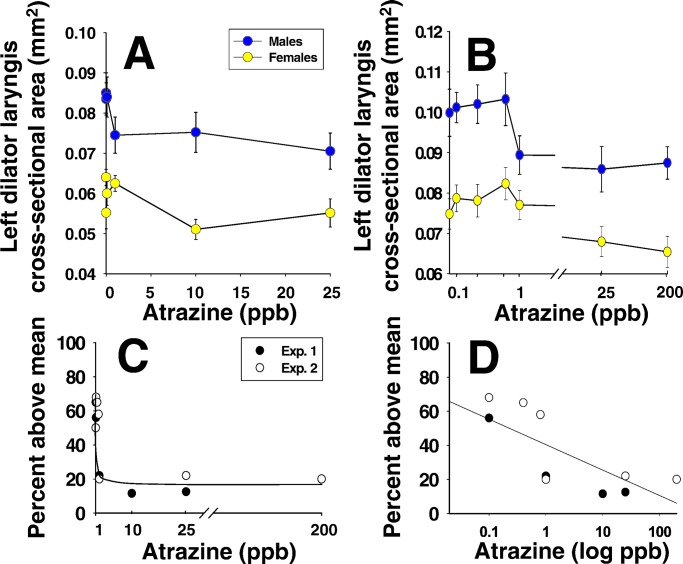Figure 3.
Results of measurements of the left laryngeal muscle (M. dilator laryngis) in control males and females compared with atrazine-treated animals. In Exp. 1 (A), atrazine (≥1 ppb) reduced laryngeal size in males but did not affect females. Doses of 0.01 and 0.1 ppb did not have a significant effect. In Exp. 2 (B), 0.1–0.8 ppb atrazine did not have a statistically significant effect on laryngeal size but again, exposure to ≥1 ppb atrazine significantly reduced laryngeal size in males (P < 0.05). Laryngeal size was greater in animals from Exp. 2 compared with Exp. 1, suggesting a population difference in the absolute size of the larynges, but the relative sizes (male to female and atrazine-treated compared with controls) were similar within each experiment. C and D show two interpretations of the data by using analysis of the proportion of above-average males for both experiments. Atrazine exposure (≥1 ppb) significantly decreased the proportion of males that were at or above the mean for control males (G test; P < 0.05) and suggested a threshold effect at 1.0 ppb in which 80% of the exposed males were below average (C). Kendall's rank coefficient analysis (P < 0.01), however, suggested a relationship between dose and the proportion of affected males with a decrease in the proportion of normal males with increased dose (D). Note that control males were normally distributed with exactly 50% of the individuals above the mean in both experiments.

